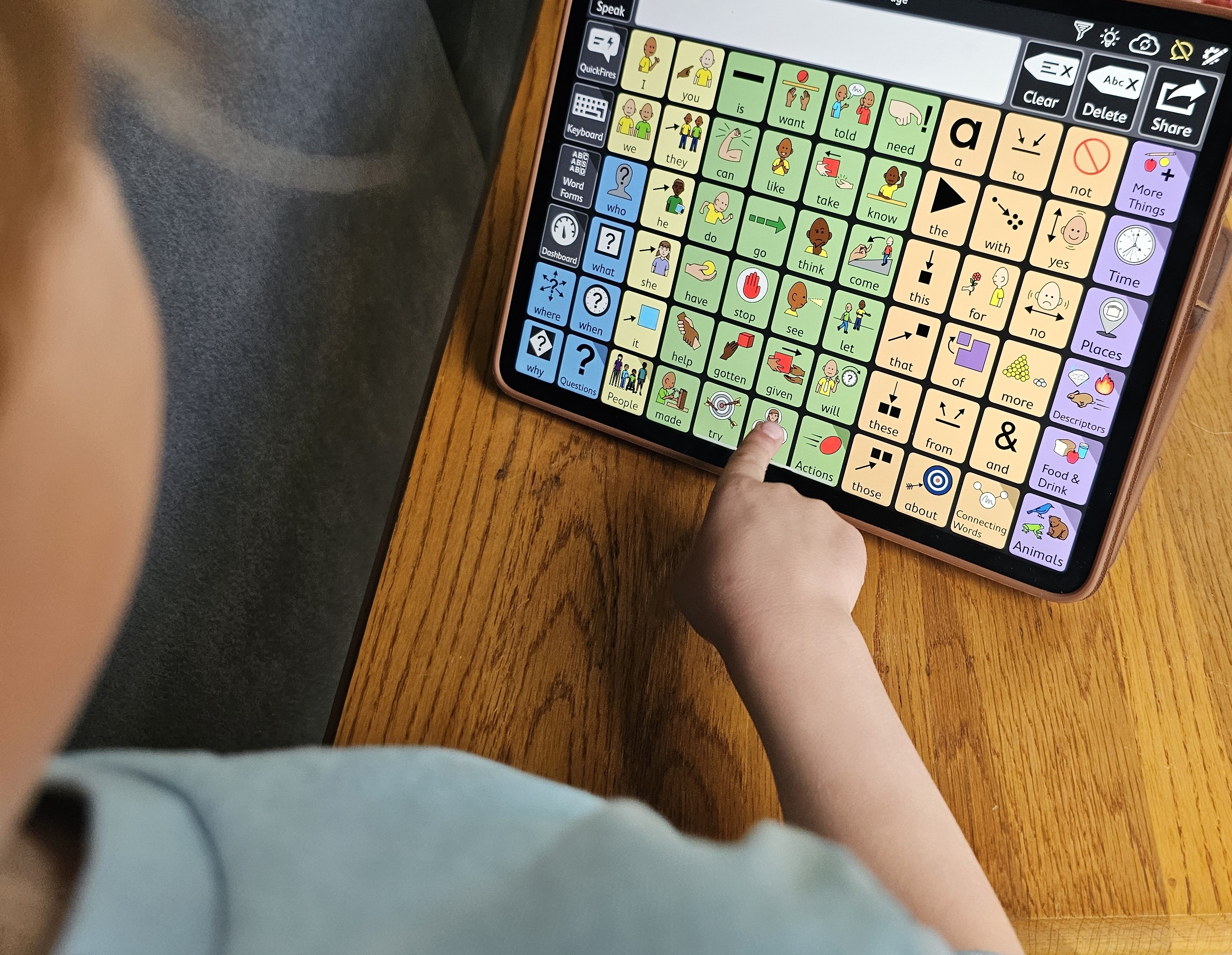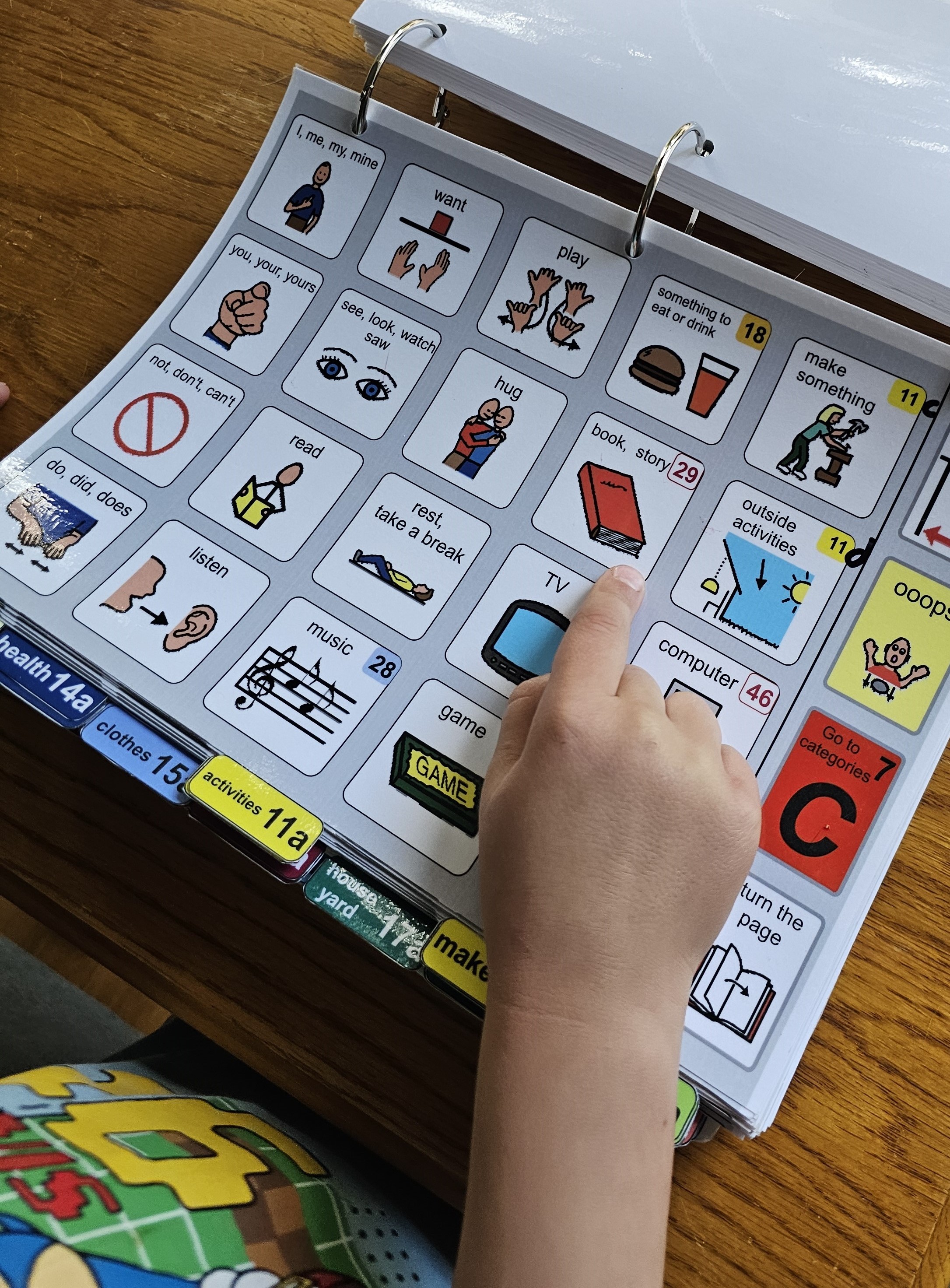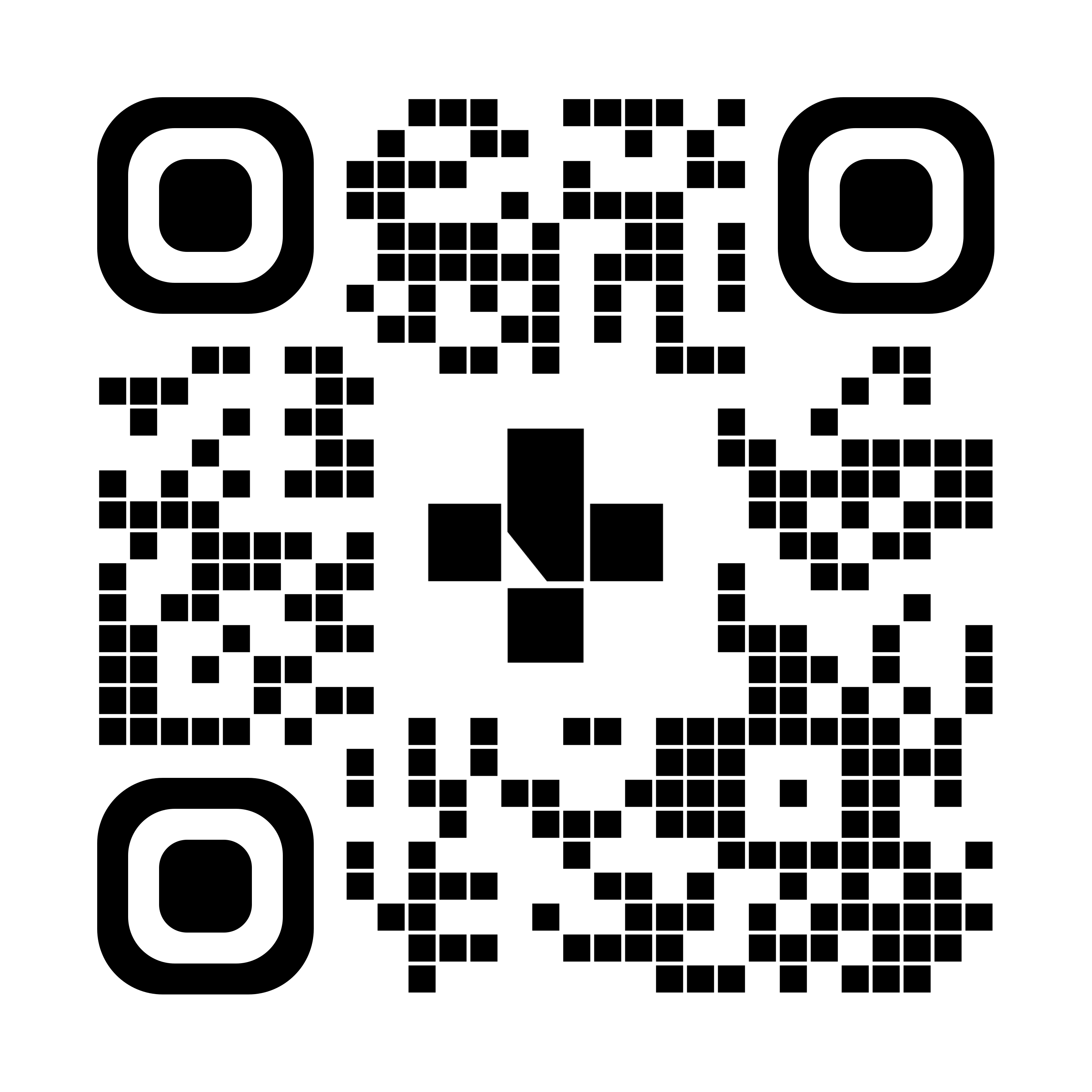Learning About Augmentative and Alternative Communication for Children
What is augmentative and alternative communication (AAC)?
AAC is a way to help your child communicate without talking. It helps your child interact with others and participate in activities. Most people use some form of AAC every day, but it’s especially important for children whose speech is hard to understand or who can’t talk. AAC includes:
- gestures and facial expressions
- using pictures and symbols on a page or in a book
- communication devices that can speak aloud when tapped
- devices that track eye gaze to allow your child to select symbols to express themself.

Electronic AAC devices are not considered screen time.
Who uses AAC?
Children can benefit from AAC to help with speech and language development. Anyone of any age or ability can use AAC including:
- children whose speech doesn't meet all their communication needs
- children who don’t talk to communicate

Why should you use AAC?
- to help teach children language and communication
- to help reduce frustration when children are difficult to understand
- as a short-term or long-term communication tool

When should you use AAC?
It's best to start using AAC as early as possible to support language and communication. Using AAC doesn’t delay speech development. AAC doesn’t stop children from talking and can actually help them talk more.
How can you help your child learn to use AAC?
Learning to use AAC is like learning any language. Children must be around AAC to learn how to use it. A great way for children to learn is by watching others use AAC. To help your child learn to use their AAC page, book, or device:
- use it yourself
- give them time to explore
- ensure it’s always available
Learning AAC takes practice and time. Be patient with yourself and your child as you learn together. Encourage and celebrate all forms of communication whether it’s words, gestures, or AAC.
Who should you call for help?
Your child’s AAC will be personalized to meet their needs. Talk to a speech-language pathologist for more information about AAC and other options that might be right for your child.
To see this information online and learn more, visit MyHealth.Alberta.ca/health/aftercareinformation/pages/conditions.aspx?hwid=custom.ab_aac_child_inst.

Related to Augmentative and Alternative Communication for Children
For 24/7 nurse advice and general health information call Health Link at 811.
Current as of: May 24, 2024
Author: Pediatric Rehabilitation Services, Alberta Health Services
This material is not a substitute for the advice of a qualified health professional. This material is intended for general information only and is provided on an "as is", "where is" basis. Although reasonable efforts were made to confirm the accuracy of the information, Alberta Health Services does not make any representation or warranty, express, implied or statutory, as to the accuracy, reliability, completeness, applicability or fitness for a particular purpose of such information. Alberta Health Services expressly disclaims all liability for the use of these materials, and for any claims, actions, demands or suits arising from such use.
